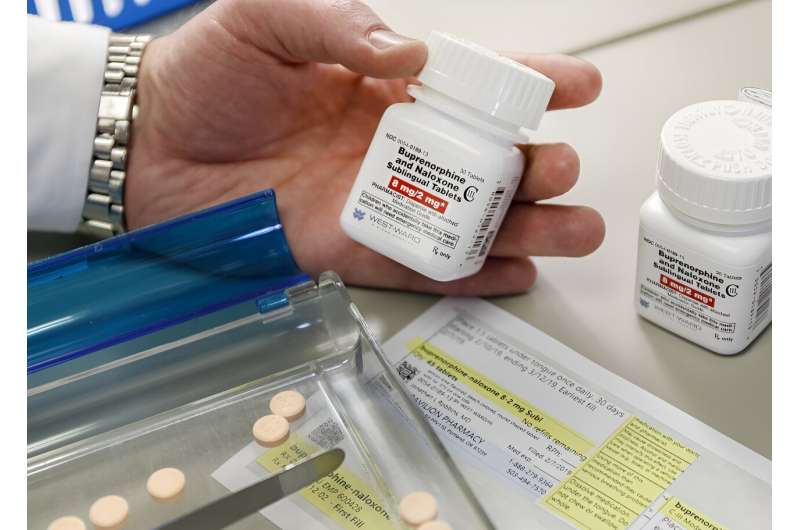This article has been reviewed according to Science X's editorial process and policies. Editors have highlighted the following attributes while ensuring the content's credibility:
fact-checked
peer-reviewed publication
trusted source
proofread
Study finds big jump in addiction treatment at community health clinics

The number of health care professionals able to write a prescription for a key medication to treat addiction quadrupled at community health clinics from 2016 to 2021, according to a new study by researchers at Oregon Health & Science University.
The findings, published online today in the journal JAMA Health Forum, provides a glimmer of hope amid a national overdose epidemic that has claimed more than 100,000 lives in the United States in each of the past few years.
The study examined community health centers serving low-income people primarily in West Coast states. Researchers found the number of health care professionals prescribing buprenorphine increased from 8.9% to 37.5% from 2016 to 2021—a substantial increase that researchers attribute to increased state and federal efforts to ease the ability of clinicians to prescribe medication to treat addiction.
Buprenorphine, approved by the Food and Drug Administration in 2002, relieves withdrawal symptoms, cravings and pain. It normalizes brain function by acting on the same target in the brain as opioids or heroin. It's one of three medicines approved by the FDA for treatment of opioid dependence, along with methadone and naltrexone.
"It's heartening," said lead author Daniel Hartung, Pharm.D., M.P.H., associate professor in the OHSU-Oregon State University College of Pharmacy. "Over a third of the providers in these community health centers are writing prescriptions for buprenorphine."
Researchers examined data from 166 clinics in the network supported by Portland-based OCHIN, Inc. The study included more than 1,300 health care professionals that provided care for some 570,000 people in 2021.
In clinics in rural areas, the proportion of health care professionals able to prescribe buprenorphine was even greater, growing from 20.3% to 52.7% in five years.
"There's still a lot of work to be done," Hartung said. "But it's a step in the right direction when more providers have the capacity to write prescriptions to treat patients who want to be treated."
In addition to Hartung, co-authors included Robert W. Voss, M.S., of OCHIN, Inc.; Steffani R. Bailey, Ph.D., and Nathalie Huguet, Ph.D., associate professors of family medicine in the OHSU School of Medicine; and John Muench, M.D., M.P.H., professor emeritus of family medicine in the OHSU School of Medicine.
More information: Daniel M. Hartung et al, Changes in Buprenorphine Prescribing in Community Health Centers, JAMA Health Forum (2024). DOI: 10.1001/jamahealthforum.2024.0634



















